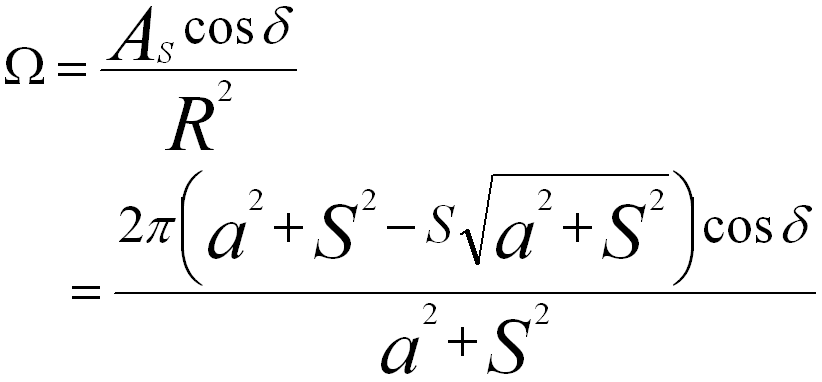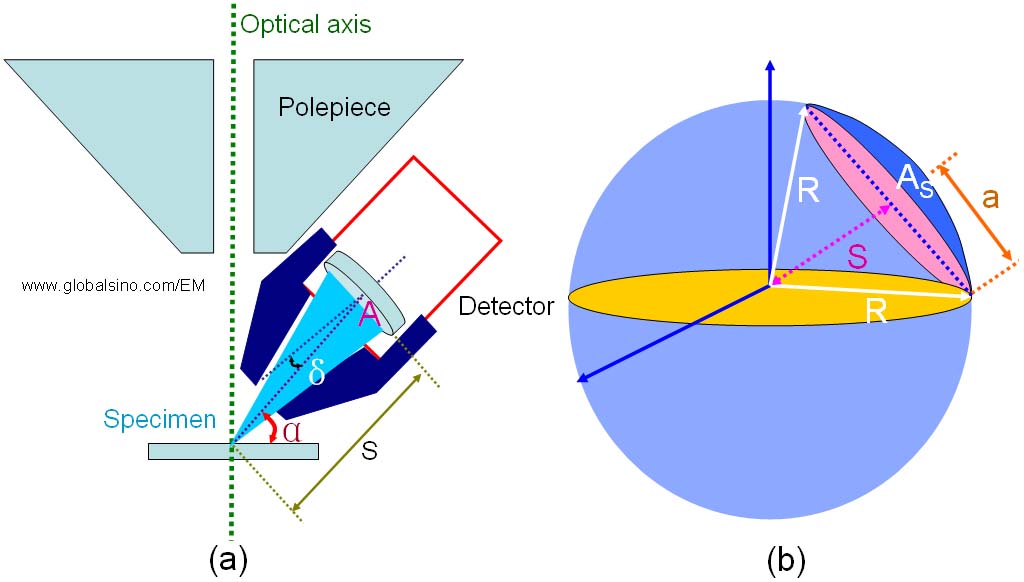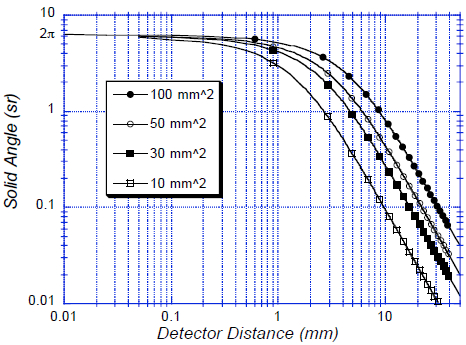=================================================================================
For a detector whose active area is circular in cross-section, or whose active area is defined by a circular collimator, the solid angle is calculated by,
 --------------------- [2539] --------------------- [2539]
where,
AS -- The equivalent surface area of a sphere nominally located at the same radial distance from the specimen [1], as shown in Figure 2539a (b),
δ -- The angle between the normal to the detector and a line from the detector to the specimen, as shown in Figure 2539a (a),
a -- The radius of the equivalent detector active area,
S -- The distance from the analysis point to the detector (not the collimator).

Figure 2539a. (a) Schematic showing the positions of the EDS detector and specimen, and (b) The geometry for solid angle calculation.
Figure 2539b shows the calculated relationship between the solid angle and distances S for various active areas A in the range of 10-100 mm2. The dependence of solid angle on the active area of the detectors is weaker when the distance is small.

Figure 2539b. The calculated relationship between the solid angle and distances S for various active areas (A) of the detectors. [1]
The EDS detector can be positioned very close to the specimen and thus a large solid angle is obtained for the collection of emitted X rays. The solid angle in a typical EDS configuration is about 10 times greater than that of a WDS. Therefore, for EDS measurement, many X-ray photons are collected per incident electron with either a small probe diameter or a low beam current. In practice, one of the main requirements of EDS detectors for EMs is to optimize the physical geometry of the EDS detectors in order to maximize the X-ray collection by shortening the specimen-to-detector distance and to leave enough physical room for other detectors and accessories.
[1] Nestor J. Zaluzec, Calculating the Detector Solid Angle in X-ray Energy Dispersive Spectroscopy, Microsc Microanal 15(Suppl 2), 2009.
|
 --------------------- [2539]
--------------------- [2539] 
